HLS Learning P12 - Implementing Arrays as RTL Interfaces
1. Array Arguments
这里所说的 Arrays 是作为 top-level functions arguments,后面会说当其作为 arguments of sub-module 时如何进行优化。如下图中所说,Synthesis 时默认会把 array arguments 转为 RAM ports,这个过程是允许你通过修改 diretives 选择 RAM interface 是单口还是双口的,但如果 Vivado HLS 认为只需要 single port 就够了,那么它最后会帮你替换为 single port。另外通过修改 directives 还可以选择使用 FIFO interfaces 以及 partition(这里其实 Arrays can be partitioned according to the data rate requirements,后面课程中会讲解)。
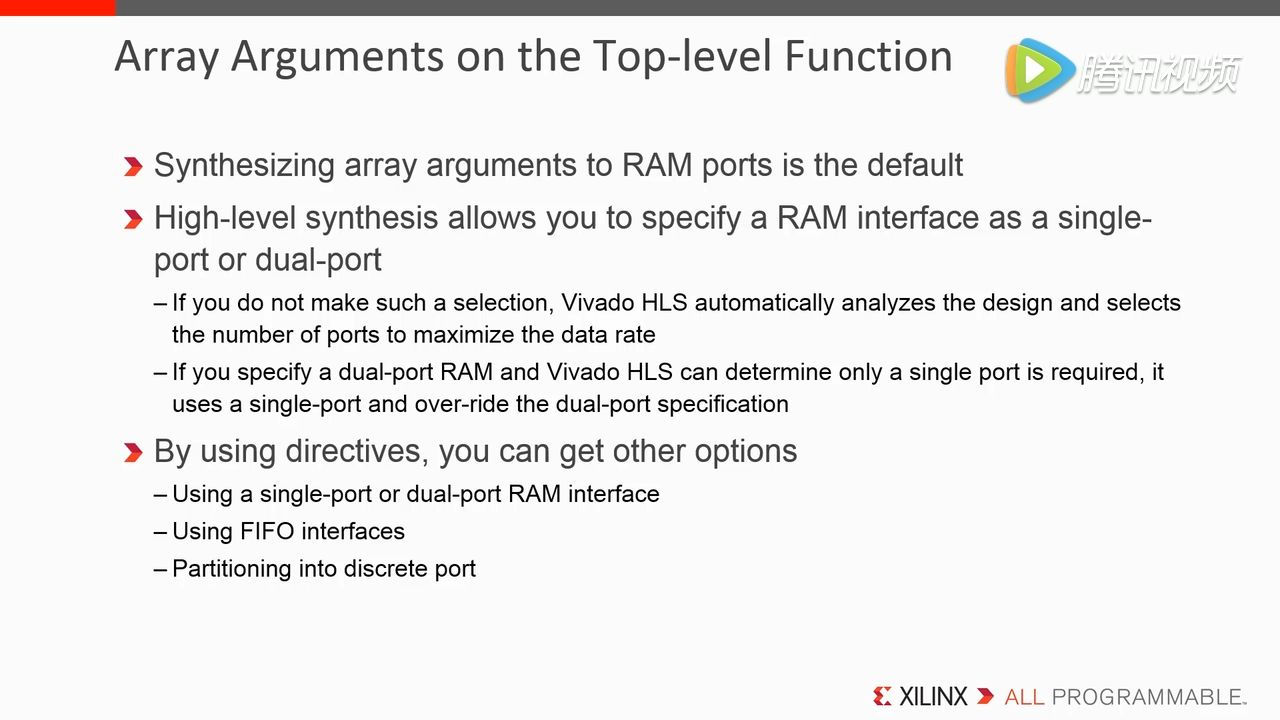
2. Case Analysis
a. Memory Interface (Default)
只要 array 作为 top-level function 的 arguments,无论什么类型,默认 protocol 都是 ap_memory。
补充:d_o_ce0 是片选信号。
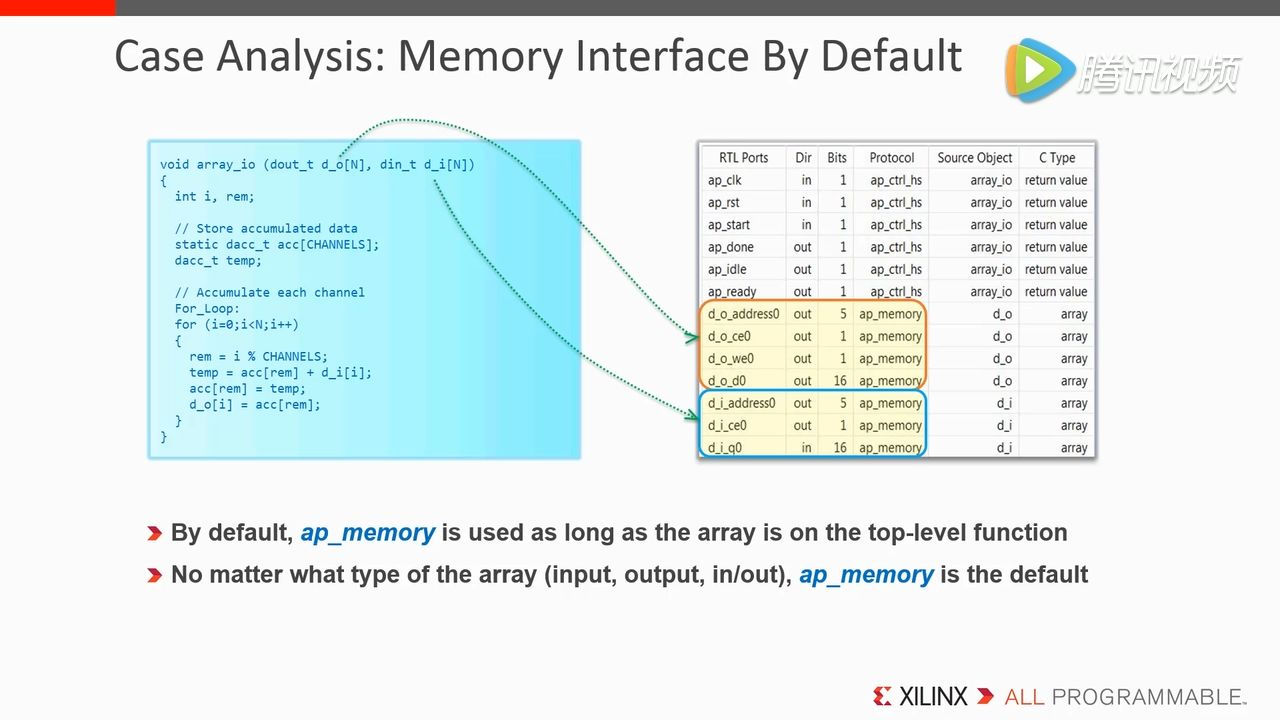
从时序波形图上看每个信号的作用

将 top-level function 综合后得到的 IP 与 RAM 模块进行连接,此时需要我们手动添加 RAM 进去,通过片选信号来决定是否激活连接。
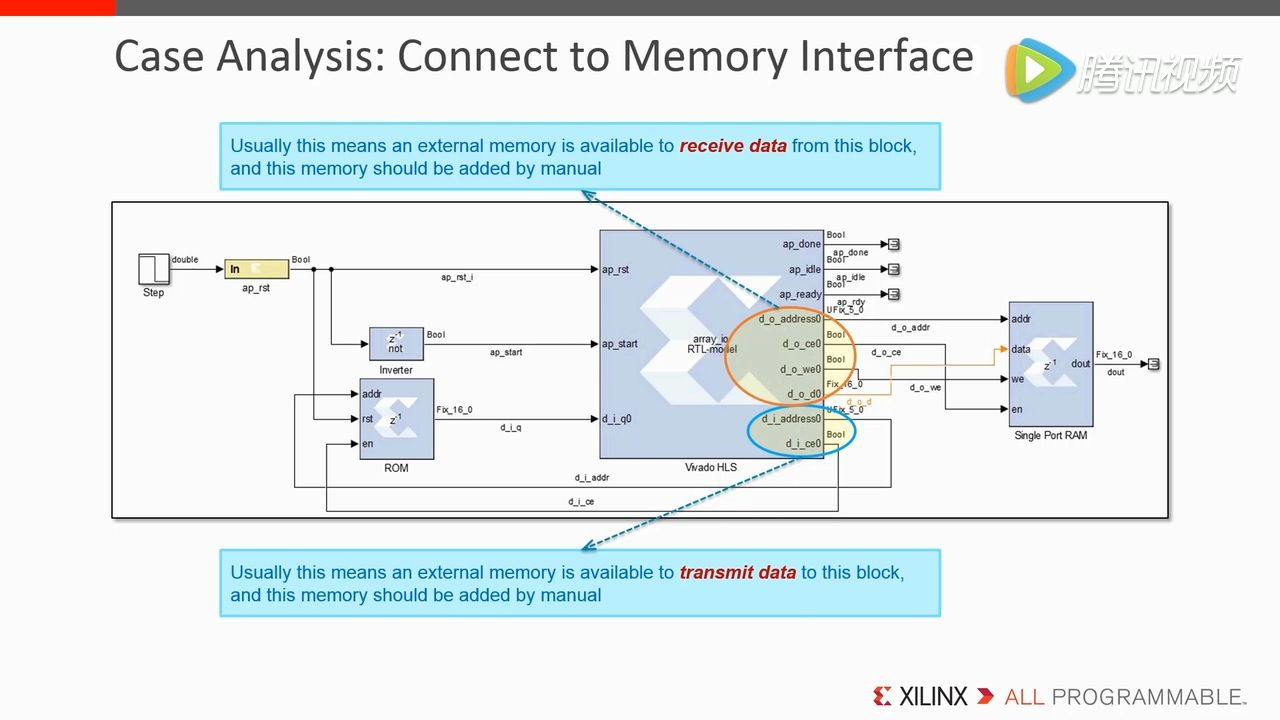
b. FIFO Interface
当数据是 stream 时可以修改 directives 选择 ap_fifo mode,会生成两组 ports(FIFO 的 input 和 output ),Protocol 均为 ap_fifo。
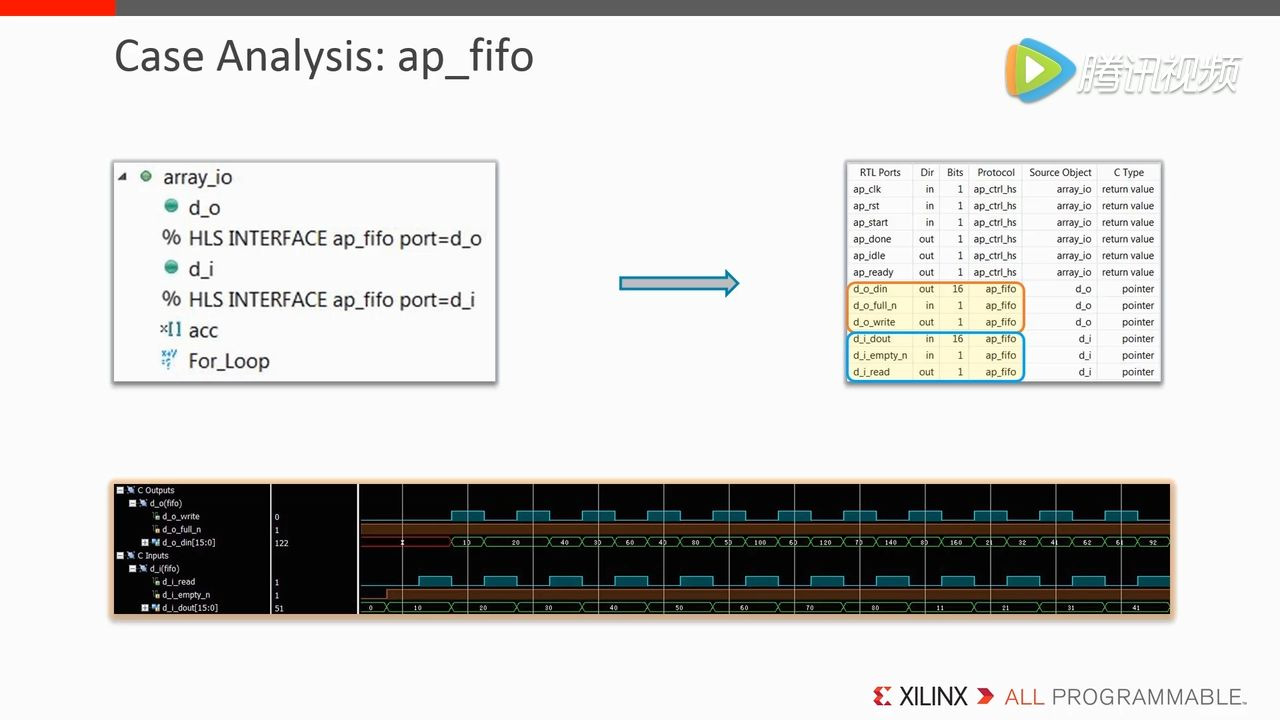
同样需要手动连接一块 memory
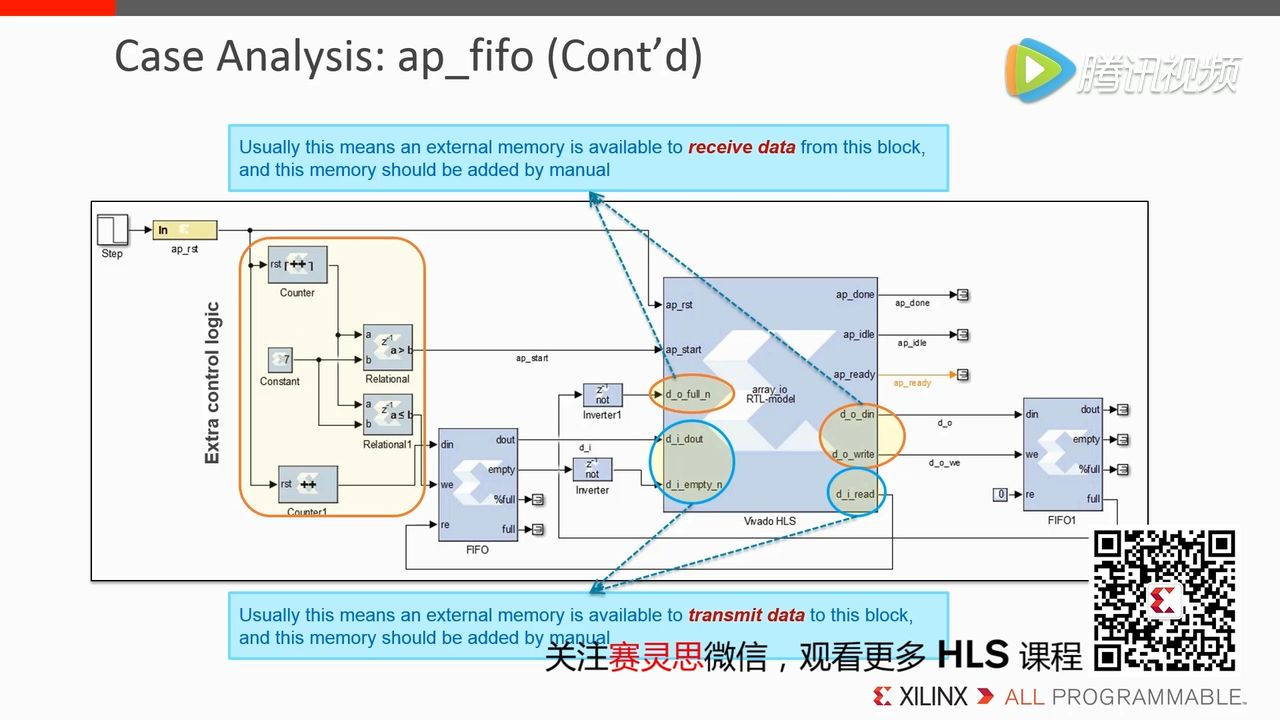
3. Summary
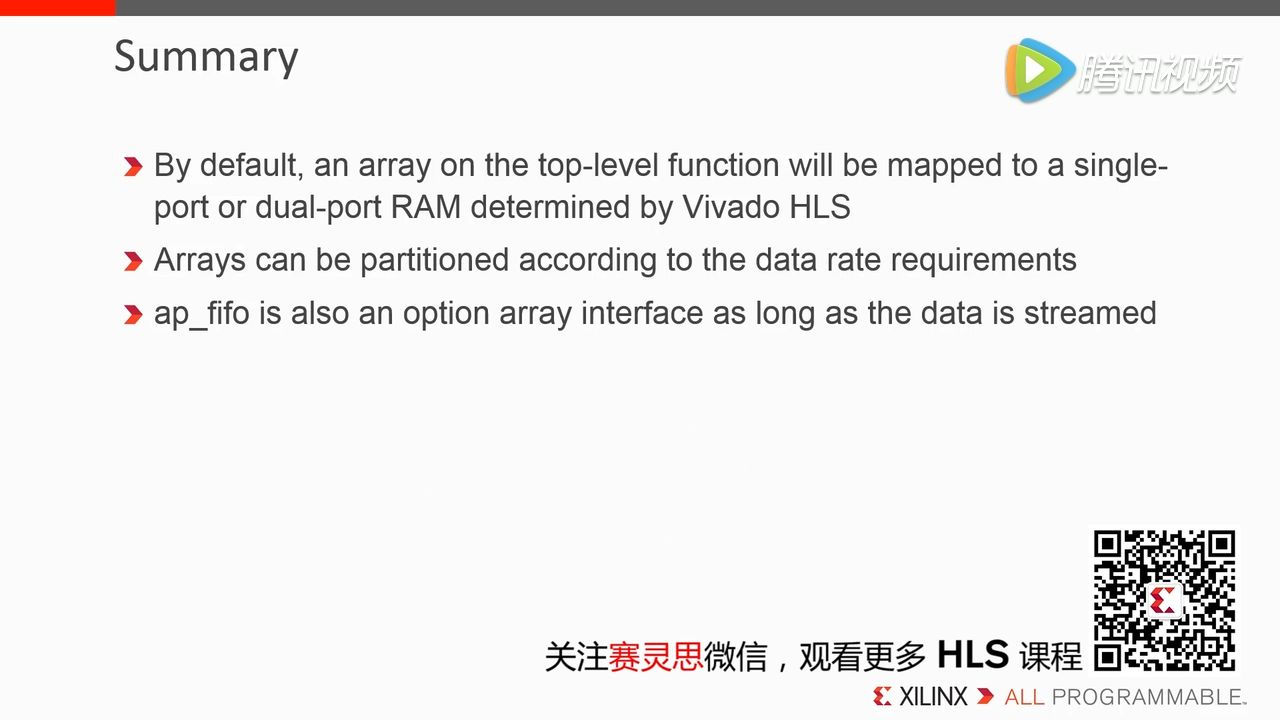
All articles in this blog are licensed under CC BY-NC-SA 4.0 unless stating additionally.